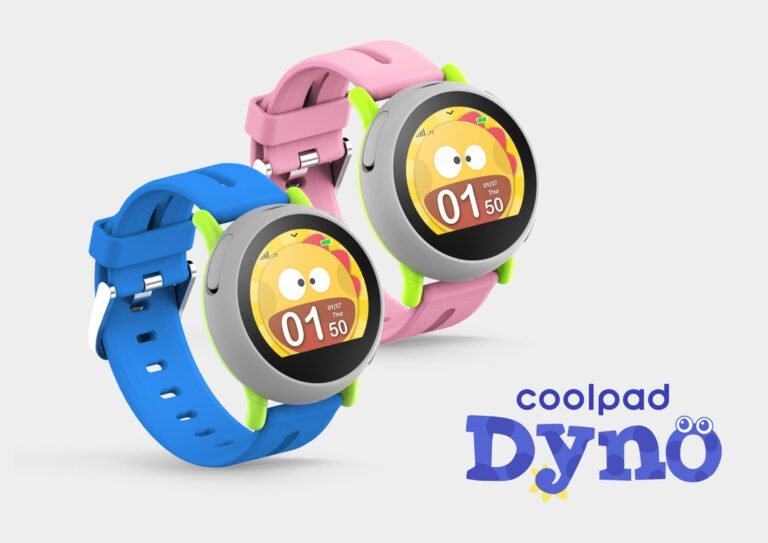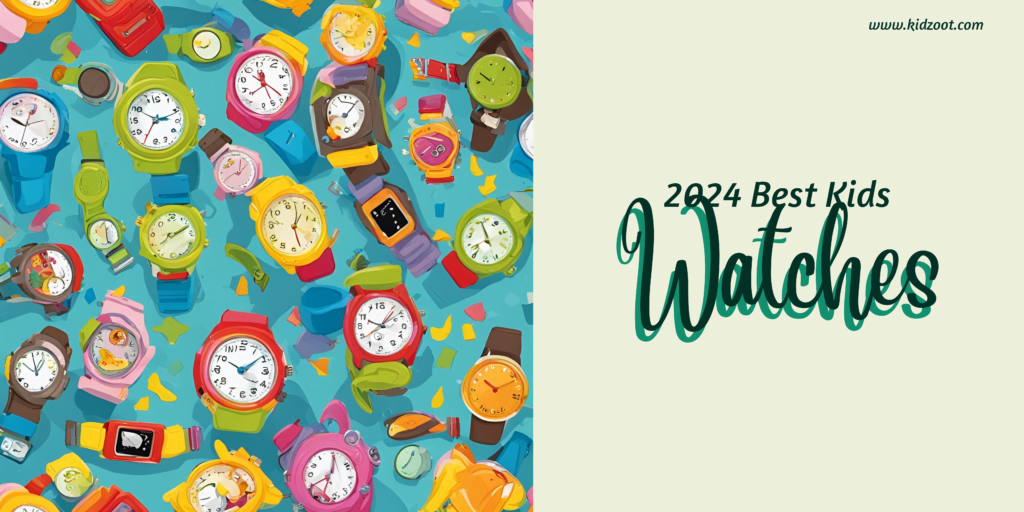In today’s digital age, smartwatches have become increasingly popular among adults and children alike. Kids Watches, specifically designed for kids, offer a blend of fun, functionality, and safety features that appeal to both children and parents. This guide will help you navigate the world of watches for kids, providing insights into their benefits, key features to look for, and reviews of some top models on the market.
Table of Contents
Introduction to Watches for Kids
KIDS watches, also known as kids’ smartwatches, are wearable devices that combine the features of a traditional watch with modern technology. These devices are tailored to meet the needs and preferences of children while addressing parents’ concerns about safety and communication.
Benefits of Watches for Kids:
a) Safety and communication: Many watches come with GPS tracking and two-way communication features, allowing parents to stay connected with their children.
b) Independence and responsibility: Kids learn to manage their time and stay organized with features like alarms, reminders, and calendars.
c) Education and entertainment: Some watches offer educational games, fitness tracking, and other engaging features that promote learning and physical activity.
d) Durability: Designed to withstand the active lifestyles of children, these watches are often more rugged than adult smartwatches.
e) Limited distractions: Unlike smartphones, watches typically have restricted features, reducing the risk of excessive screen time or access to inappropriate content.
Key Features to Consider When Choosing a Watch
When selecting a watch for your child, consider the following features to ensure you find the best fit:
a) GPS Tracking and Geofencing:
One of the primary reasons parents opt for watches is the ability to track their child’s location. Look for watches with accurate GPS tracking and geofencing capabilities. Geofencing allows you to set up virtual boundaries and receive alerts when your child enters or leaves designated areas.
b) Communication Features:
Two-way communication is essential for staying in touch with your child. Consider watches that offer voice calling, text messaging, or even video calling. Some models allow you to set up a list of approved contacts, ensuring your child can only communicate with trusted individuals.
c) SOS or Emergency Button:
A dedicated SOS button can provide peace of mind. In case of an emergency, your child can quickly alert you or predetermined emergency contacts with a single press.
d) Battery Life:
Since children may forget to charge their devices regularly, opt for a watch with long battery life. Some models can last several days on a single charge, while others may require daily charging.
e) Durability and Water Resistance:
Kids are active and prone to accidents. Choose a watch with a durable design, scratch-resistant screen, and water resistance to withstand daily wear and tear.
f) User Interface and Ease of Use:
The watch’s interface should be intuitive and easy for children to navigate. Look for large, colorful displays and simple menus that cater to your child’s age group.
g) Parental Controls:
Robust parental controls allow you to manage the watch’s features, set usage limits, and monitor your child’s activities. Some watches offer companion apps for parents to adjust settings remotely.
h) Educational and Entertainment Features:
Consider watches that offer age-appropriate games, puzzles, or learning activities. These features can make the watch more engaging for your child while promoting cognitive development.
i) Fitness Tracking:
Some watches include pedometers or activity trackers, encouraging children to stay active and develop healthy habits.
j) Camera:
A built-in camera can be a fun feature for kids to capture memories or engage in creative activities. However, ensure the watch has privacy settings to control camera usage.
k) Compatibility and Connectivity:
Check if the watch is compatible with your smartphone and home Wi-Fi network. Some watches require a separate cellular plan, while others can work with your existing family plan.
l) Design and Customization:
Choose a watch with an appealing design that your child will enjoy wearing. Some models offer interchangeable straps or watch faces for personalization.
Top Watches for Kids: Reviews and Comparisons
Now that we’ve covered the essential features, let’s explore some of the best watches available for kids:
a) VTech KidiZoom Smartwatch DX2:

The VTech KidiZoom DX2 is an excellent choice for younger children aged 4-12. It doesn’t require a cellular connection, making it a more affordable option.
Pros
- Dual cameras for photos and videos
- Motion sensor for active play challenges
- 55 digital and analog watch faces
- Games, puzzles, and a voice recorder
- Splash-proof design
Cons:
- No GPS tracking or communication features
- Limited storage capacity
b) Garmin vívofit jr. 3:

The Garmin vívofit jr. 3 is a fitness-focused smartwatch designed for kids aged 4-9. It emphasizes activity tracking and rewards.
Pros
- Year-long battery life (no charging required)
- Disney, Marvel, and Star Wars themed designs
- Interactive app adventures
- Swim-friendly design
- Chore management and reward system
Cons:
- No communication or GPS features
- Limited screen size
c) Apple Watch SE (GPS):

For older kids and teens, the Apple Watch SE offers a more advanced smartwatch experience with robust safety features.
Pros
- Fall detection and emergency SOS
- Family Setup for GPS models (no separate phone required)
- Comprehensive fitness tracking
- Wide range of apps and features
- Water-resistant design
Cons:
- Higher price point
- May have more features than younger children need
- Requires an iPhone for full functionality
d) Xplora X5 Play:

The Xplora X5 Play is a feature-rich watch designed specifically for children, offering a balance of safety and fun.
Pros
- GPS tracking and geofencing
- Two-way calling and messaging
- School mode to minimize distractions
- Waterproof design
- Activity tracker with reward system
Cons:
- Requires a cellular plan
- Battery life could be improved
e) GizmoWatch 3:

Verizon’s GizmoWatch 3 is a popular choice for parents seeking a reliable communication and tracking device for their kids.
Pros
- Accurate GPS tracking
- Two-way calling and messaging
- Geofencing and safe zones
- Step tracker and reminders
- Durable, water-resistant design
Cons:
- Exclusive to Verizon network
- Limited app ecosystem
f) Coolpad Dyno 2:

The Coolpad Dyno 2 offers a good balance of features for kids aged 4-11, with a focus on safety and communication.
Pros
- GPS tracking and geofencing
- Two-way calling and messaging
- SOS button for emergencies
- Class mode to minimize distractions
- Rugged, water-resistant design
Cons:
- Requires a T-Mobile cellular plan
- Limited battery life
Age-Appropriate Recommendations
When selecting a kid watch, consider your child’s age and maturity level:
Ages 4-7: For younger children, prioritize watches with simple interfaces, fun designs, and basic features. Watches like the VTech KidiZoom DX2 or Garmin vívofit jr. 3 are excellent choices, offering engaging activities without the need for cellular connectivity.
Ages 8-11: Children in this age group may benefit from watches with GPS tracking and communication features. The Xplora X5 Play, GizmoWatch 3, or Coolpad Dyno 2 provide a good balance of safety features and kid-friendly functions.
Ages 12 and up: Older children and teens may prefer more advanced smartwatches with a wider range of features. The Apple Watch SE or similar full-featured smartwatches can be suitable options, offering a transition into more adult-oriented devices.
Safety Considerations and Best Practices
While kids watches offer numerous benefits, it’s essential to consider safety and privacy concerns:
a) Data Privacy: Research the watch manufacturer’s data protection policies to ensure your child’s information is secure. Look for watches that comply with children’s privacy regulations.
b) Secure Communication: Opt for watches that allow you to control and monitor your child’s communications. Set up approved contact lists and discuss online safety with your child.
c) Geofencing and Alerts: Familiarize yourself with the watch’s geofencing features and set up appropriate safe zones and alerts.
d) Screen Time Management: Use parental controls to set usage limits and prevent excessive screen time or distractions during school hours.
e) Regular Check-ins: Establish a routine for checking the watch’s battery life, updating software, and reviewing your child’s activity logs.
f) Open Communication: Discuss the purpose of the watch with your child, emphasizing that it’s a tool for safety and communication, not surveillance.
Maintenance and Care Tips
To ensure your child’s watch remains functional and long-lasting, consider these maintenance tips:
a) Cleaning: Regularly clean the watch with a soft, damp cloth to remove dirt and sweat. Avoid using harsh chemicals or submerging non-waterproof models.
b) Charging: Establish a routine for charging the watch, such as every night before bed. Use the provided charging cable and avoid overcharging.
c) Software Updates: Keep the watch’s software up to date to ensure optimal performance and security.
d) Physical Protection: Consider purchasing a screen protector or protective case for added durability.
e) Strap Replacement: For watches with interchangeable straps, periodically check for wear and tear, replacing straps as needed.
Future of Watches for Kids
As technology continues to evolve, we can expect watches for kids to incorporate more advanced features:
a) Improved Battery Life: Future models may offer extended battery life through more efficient processors and better power management.
b) Enhanced Health Monitoring: Advanced sensors could provide more comprehensive health tracking, including sleep monitoring and stress detection.
c) Augmented Reality (AR) Integration: AR features could offer immersive educational experiences and interactive games.
d) Artificial Intelligence (AI) Assistants: Kid-friendly AI assistants may provide personalized learning support and schedule management.
e) Eco-Friendly Materials: Manufacturers may focus on using sustainable materials and promoting recyclability.
Conclusion
Selecting the best watch for your child involves carefully considering their age, needs, and your family’s priorities. By focusing on essential features like safety, communication, durability, and age-appropriate functions, you can find a watch that both you and your child will love.
Remember that while watches offer numerous benefits, they should complement, not replace, open communication and quality time with your child. Use these devices as tools to foster independence, responsibility, and safety awareness.
As the market for children’s smartwatches continues to grow, stay informed about new models and features. Regularly reassess your child’s needs and upgrade their watch as they mature and their requirements change.
Ultimately, the best watch is one that provides peace of mind for parents while offering a fun, educational, and empowering experience for children in our increasingly connected world.
Kidzoot Team
Parenting tips and tricks from experts with years of experience in child rearing. Get practical advice and fun activities to enjoy with your kids from our team of parents and educators.

